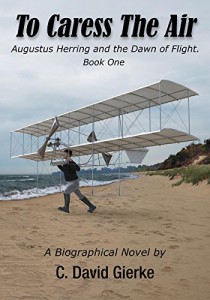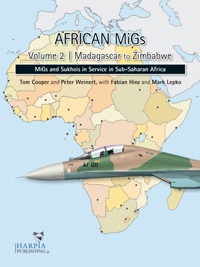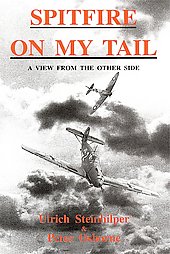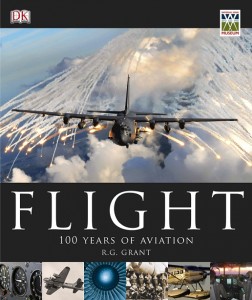The pilot slowly brings the aircraft to the beginning of the runway. I look around the cabin and notice many passengers asleep. They have been sleeping since shortly after boarding. In this regard, I am of one mind with the stoic philosopher, Marcus Aurelius, when the venerable ancient Greek thinker writes, “Thus to a man of sensitiveness and sufficiently deep insight into the workings of the universe, almost everything, even if it be no more than a by-product of something else, seems to add its meed of extra pleasure.”
Bracing myself for takeoff, I watch people working on an airplane outside a nearby hanger. I think of how vast a commercial airport runway truly is. I remember the first time I stared out into that colossal area of asphalt and concrete before me. I was fifteen years old and riddled with nervous excitement during my first flight. The airplane was a Cessna 150. I was as dazzled then as I continue to be today by aviation and the flying machines that man has built.
The Bombardier CRJ 700 is a delightful machine. The airplane speeds through the runway, gaining takeoff speed. Forty seconds later, and I am airborne. Gazing down at my hometown, I still get the same impression I got from my first experiences in flying: I am not really going up; rather, the world is falling away. I see my home, my children’s school, nearby. I am humbled by the reality that all of my hopes and aspirations are anchored there, below me, in what is essentially a much smaller world than it appears from the ground.
Today we are fortunate to enjoy a bountiful array of aviation books. Since the Wright Brothers first flew in 1903, aviation history has become one of the signature creations of mankind. This means that today we can read, learn, and become interested in perhaps man’s greatest feat of imagination by simply tapping into the vast amount of aviation literature available.
Readers of aviation history are treated to very good and detailed books that awe the imagination. R. G. Grant’s Flight: 100 Years of Aviation is such a gem. Published by DK Publishing, this is the kind of book that young aviation enthusiasts rarely came across growing up in the 1960s and ‘70s. This book contains abundant color photographs, drawings, biographical profiles of aviators, and more data and specs than most aviation enthusiasts can absorb. This is the kind of excellent book that reminds us of the profound cultural effect that aviation has had on modern man.
The CRJ 700 banks to the left and continues to climb on its way north. The early morning sun radiates through the starboard windows and floods the cabin with vibrant light. This quiet, smooth aircraft is a darling of the sky in its class. In many ways, the CRJ 700 gives me the impression of flying in a private jet. This is perhaps because the CRJ 700 was inspired from its corporate jet cousin, the Bombardier 870 CS. The pilot informs the passengers that we will be climbing to 35,000 feet.
After my first flight on a Cessna 150, I flew the 152 and 172. From the age of six I was captivated by the idea of being a pilot. I loved to see those beautiful and powerful machines flying low over our house. As a child, there was never an airplane that flew past me that I did not run out to see. I was moved by the sounds of the different engines. The roar of the early jet engines, like the Boeing 727, DC-8, the Convair 880 and 990, and my favorite, the Boeing 707, made me cheer those aircrafts on, as if they were off to accomplish some heroic task.
The hum of propeller engines also still enjoys a special place in my heart and imagination, wherever I encounter one. Never did a DC-3 fly by that I did not drop what I was doing to admire its grace and beauty. That formidable machine, built in 1935, is still flying. Whenever I see one flying cargo today, I regret that I have yet to fly in one. Its leisurely, graceful manners speak of a time when the world still understood, as Mies van der Rohe has written, that “God is in the details.”
Because for many years my family lived in the direct path of airplanes taking off and landing in the path of Miami International Airport’s runway 8R/26L, I was fortunate to witness many legendary aircrafts fly by. Our house was six miles away from the airport. I even got to see the Concorde, when this supersonic bird first began flying to Miami in the 1980s. I loved the symmetry of the Boeing 707, as this gallant airliner flew right over me. I could even identify airplanes by their distinctive contrails.
As a young boy, I began to study aviation history. Yet I was never satisfied with pictures in books, I had to experience them firsthand. I loved watching their landing gear coming in and out of their bellies. I was mesmerized by the shapes and colors of airline logos. Some of these, like Braniff International, Ecuatoriana de Aviación and National Airlines were painted in vibrant and spirited livery. During the 1970s, Miami based National Airlines displayed the name of flight attendants, like, “Linda,” “Suzanne” and “Elaine” on the front of their airplanes. Commercial aviation once inspired the active imagination of young children.
I also witnessed lovely machines like the Lockheed Constellation flying low overhead. Whenever I noticed interesting details on the airplanes overhead, I would go to the public or school library and look it up. I spent many gentle hours in solitary bliss sitting on the lawn gazing up at the sky.
The CRJ 700 flies low over Indiana fields on its approach into Indianapolis. It is a clear day. Looking down, I realize that automotive and Aviation history are the definitive technological and cultural creation that the imagination and will of mavericks has bestowed to our tired and unimaginative world today. I see Indianapolis in the distance. This is a nice town with fine Midwestern American people.
We touch down gently. I think of the noble Wright Brothers. Prometheus unbound, l dare say. I am grateful for the courage and will of the pioneers who enabled us to soar the heavens, as ancient man once aspired.
Looking around the inside of the airplane, I am not surprised to see many passengers still sleeping.











Leave a Reply